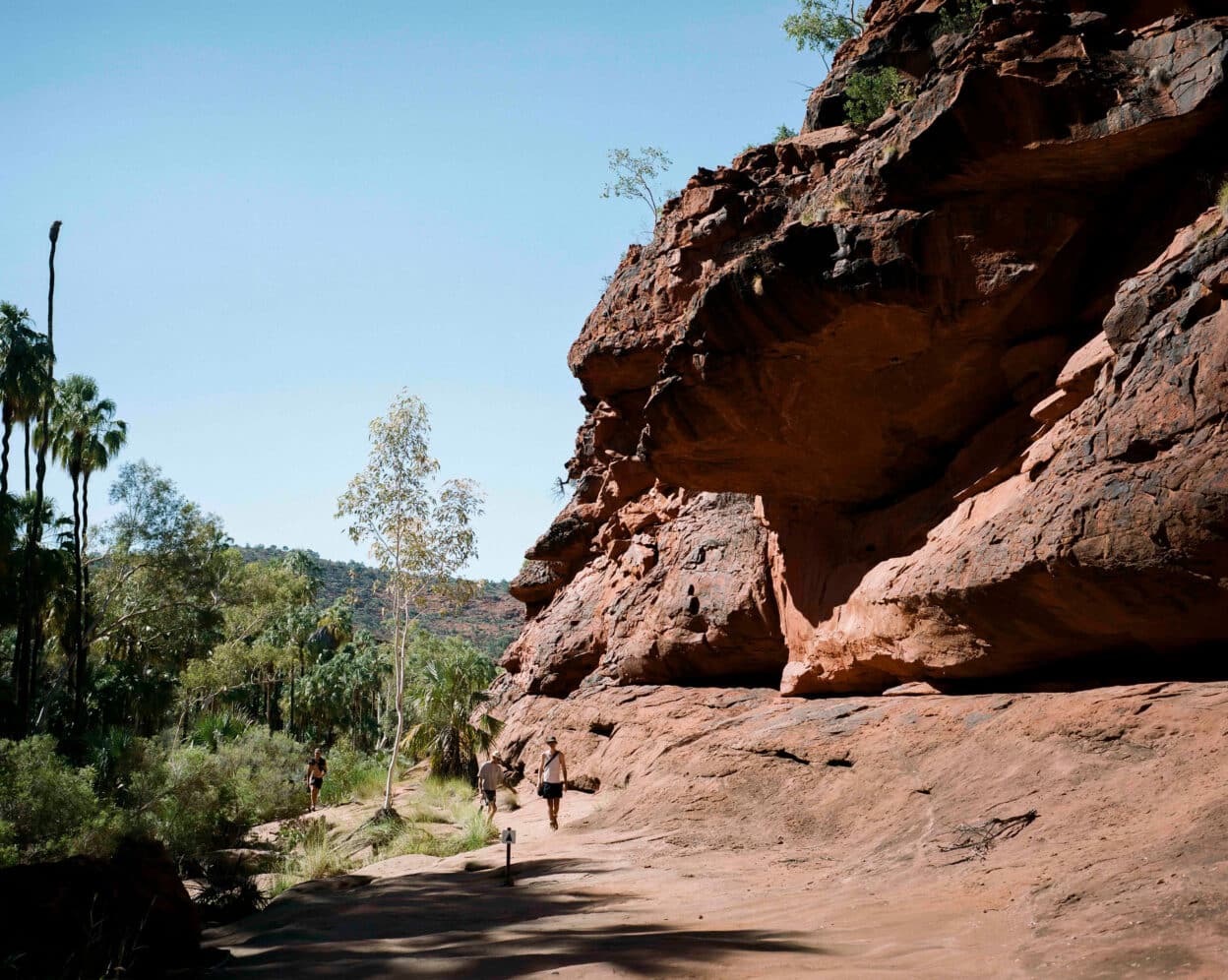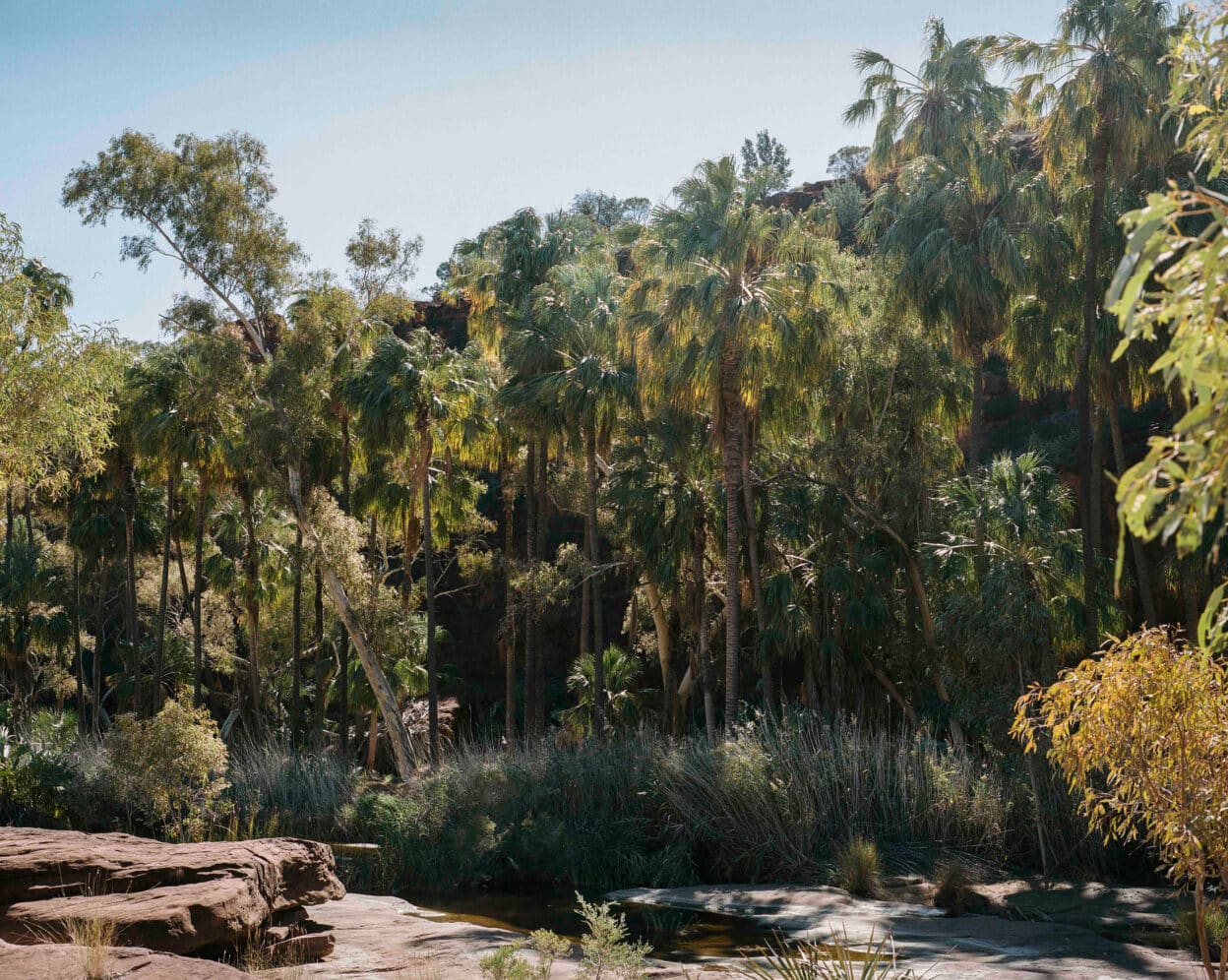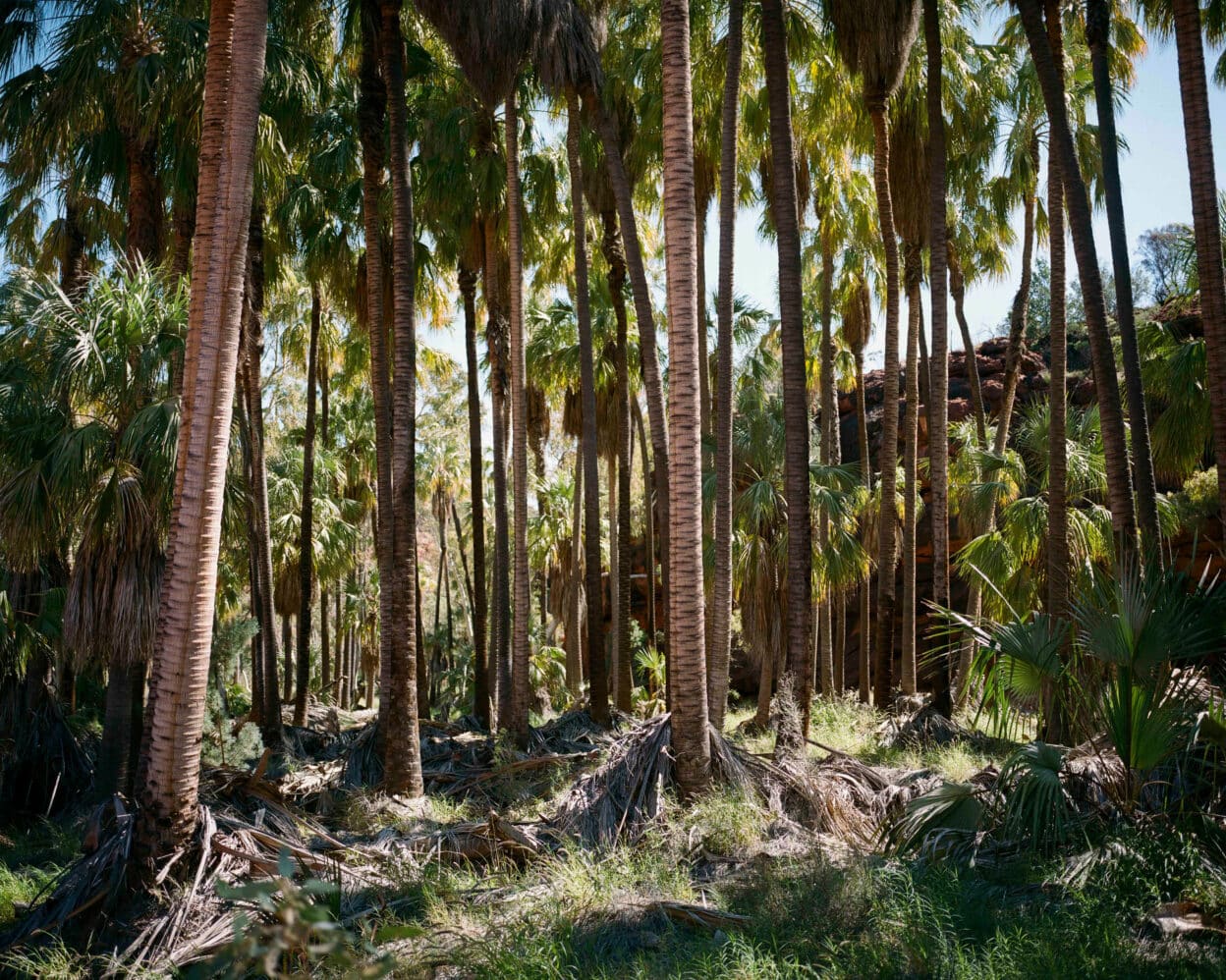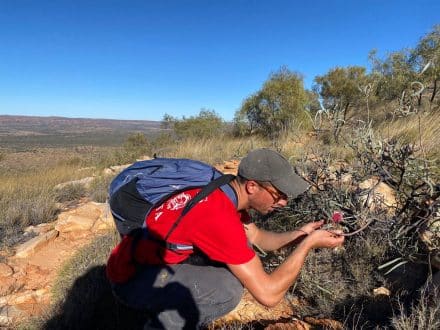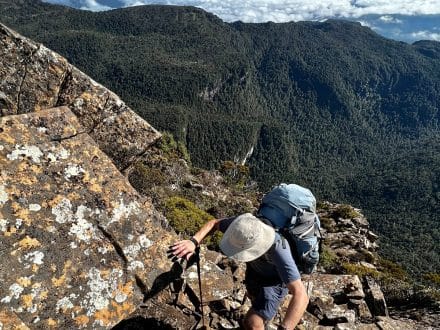A few hours outside Alice Springs lies an abundant and ancient desert oasis by the name of Palm Valley.
The Finke River is said to be one of the oldest riverbeds on earth. A two-hour drive west of Alice Springs (Mparntwe), just past the Hermannsburg community, you’ll find the turn-off to Finke Gorge National Park, home to the astonishing Palm Valley. As you follow a sandy 4WD track along the ancient riverbed, there is an unshakeable sense of the history.
The area holds a great deal of cultural significance for the Aranda people, the Traditional Owners of the land. It is home to a diverse range of flora and fauna, some of which is unique to these parts, such as the red cabbage palm. The Finke Gorge National Park is the only place in the Northern Territory where these palms are able to grow and as we entered the valley it was hard to not feel as though we’d entered some kind of desert oasis. The slender trunks of the palms towered towards the sky, their vibrant green fronds juxtaposed with the dry red of the landscape around them.


After parking the cars at the very end of the 4WD track, we filled up on salad sandwiches and headed off on the trail. There are two walk options that begin from the same spot and take you into the gorge. The Arankaia Walk (two kilometres, one hour) and the Mpulungkinya Walk (five kilometres, two hours return). We had the time, so chose the longer Mpulungkinya Walk – a loop that made its way along Palm Creek and into the valley before heading back over the gorge to the carpark.
The path meandered across a hard rock surface initially interrupted by some sandy sections that the rangers had laid matting over. Walking along Palm Creek, we examined pools of water where small fish, tadpoles, frogs and dragonflies brought what little water there was to life. As we walked further into the gorge, sparse groups of red cabbage palms quickly became more dense, filling the creek bed, their fronds filtering the harsh sunlight that was beating down. We had left behind the open desert and big sky, now immersed in a world so lush and untouched it felt prehistoric. The path continued along the creek as the gorge opened up gradually. We stopped for some water under the shade of an overhanging rock face. Taking plenty of water is recommended as the temperature is regularly over 30°C and the creek water is mostly stagnant.
After sitting and taking in our incredible surroundings, we continued along the path. We’d entered a wide, amphitheatre-like section of the gorge and the path began to take us up the side. As we ascended, winding in between large boulders, we got a panoramic view over the valley. Looking out gave a real sense of the scale of the landscape. It’s also worth keeping your eyes out for beautiful white ghost gums that can be found clinging to the rock face.
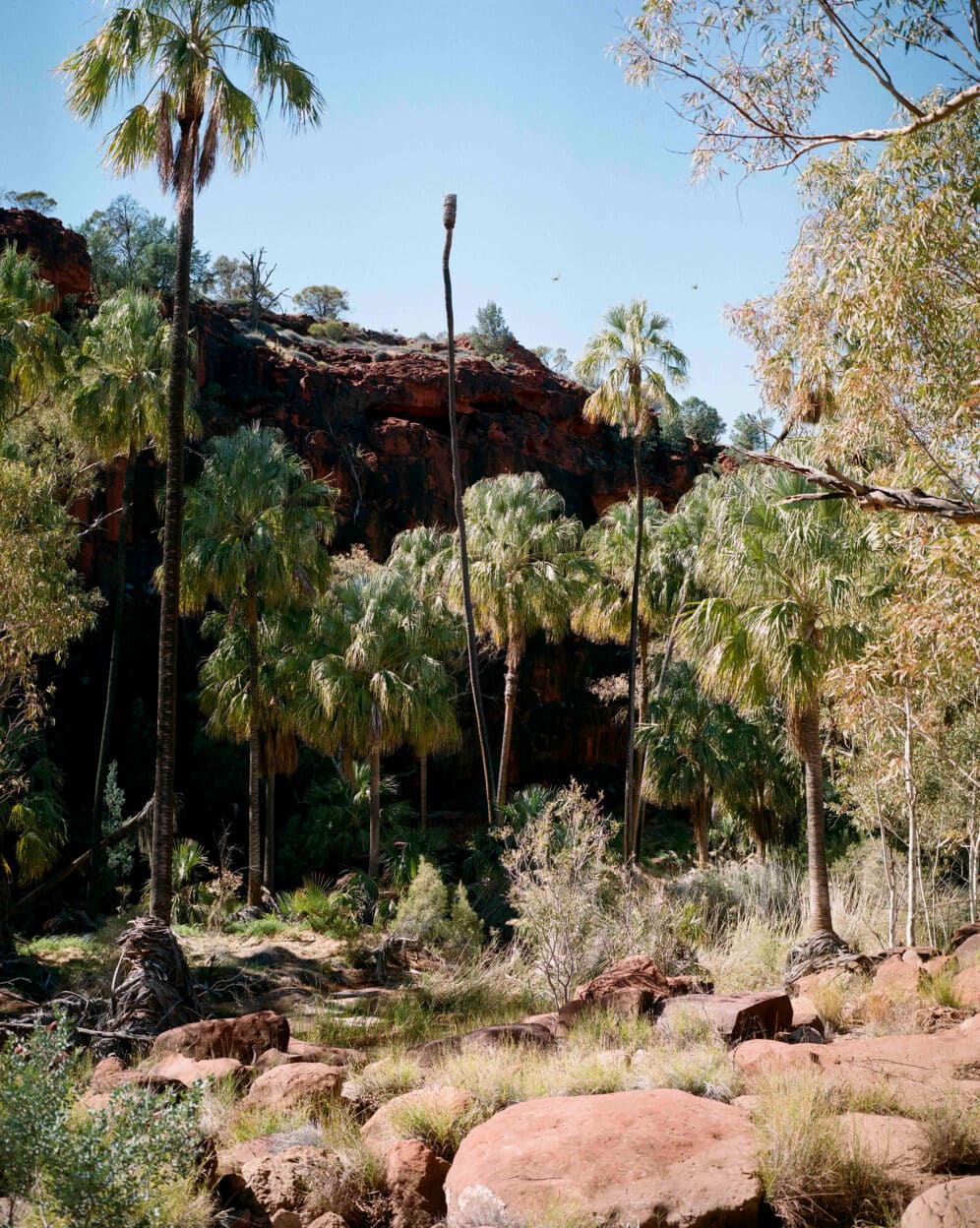
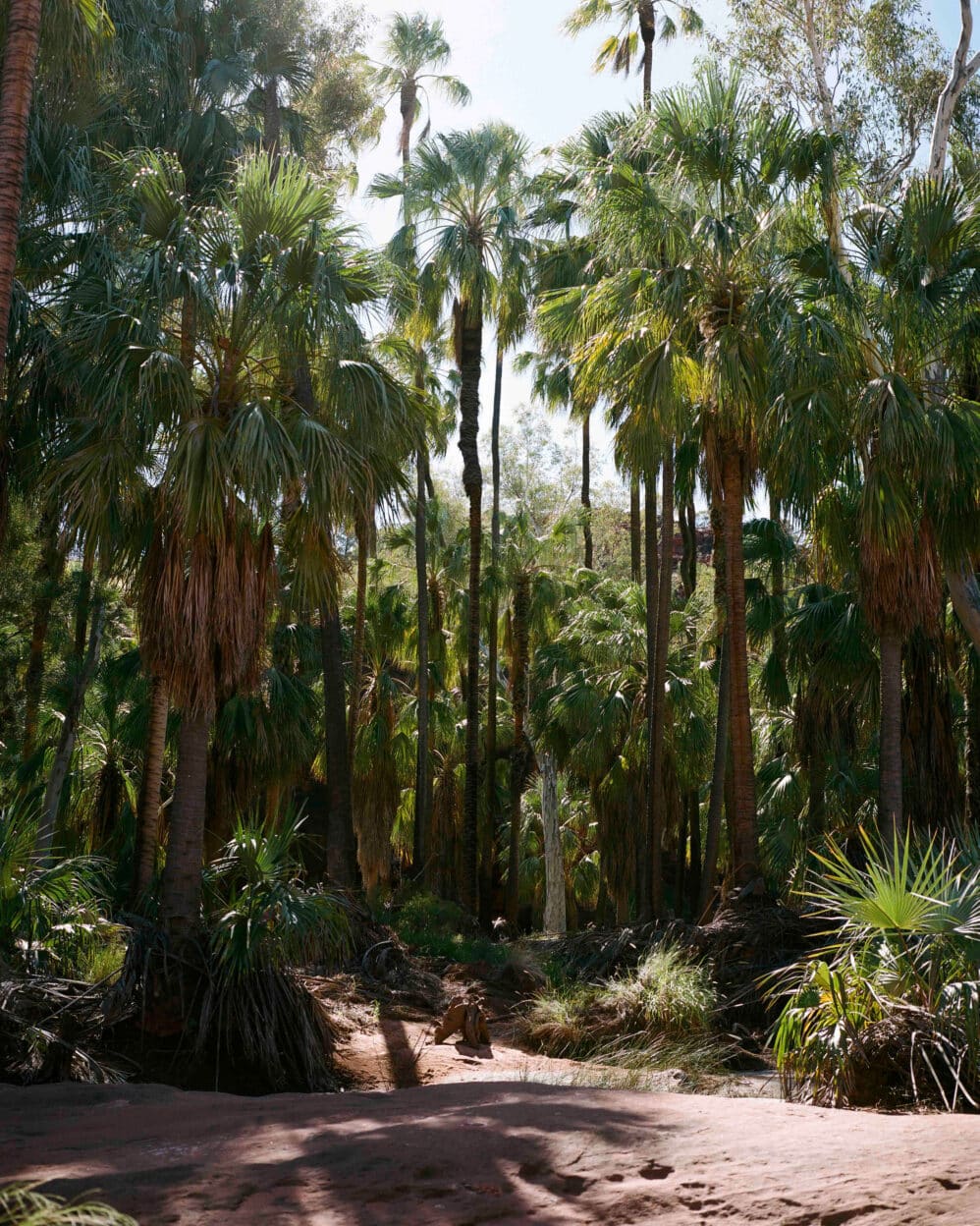
At the top, we left behind the lush gorge and red cabbage palms. Walking across the plateau, we got to see large groups of spinifex bush and plenty of wildflowers. The track wound across the plateau before snaking down back towards the car park. With one last look towards Palm Creek and the incredible, oasis-like landscape, we got back in our cars and headed off down the 4WD track into the burnt orange of the late afternoon.
